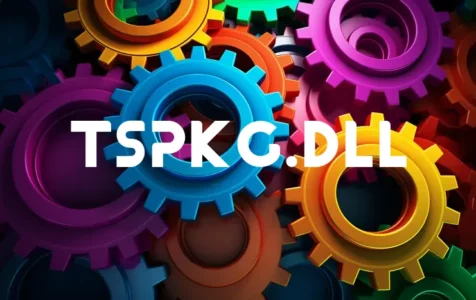Introduction to TSpkg.dll
TSpkg.dll, known as the Web Service Security Package, is a Dynamic Link Library (DLL) file associated with Microsoft Windows Operating System. The file is a crucial component developed by Microsoft Corporation and is used by the system to run software applications smoothly.
Is TSpkg.dll Safe to Run?
DLL files are integral to the workings of your computer and applications. Tspkg.dll is not intrinsically harmful; it is designed to be part of the Windows operating system. Under normal circumstances, it should be located in the C:\Windows\System32 folder. If you find it elsewhere, you should be cautious as it could be a sign of a malware infection pretending to be a legitimate file.
Potential TSpkg.dll Issues and Errors
Errors with tspkg.dll can occur for various reasons. It might be that the tspkg.dll file has been accidentally deleted or misplaced, it could have been corrupted by malicious software, or there might be problems with your Windows registry. These issues could manifest in several ways, such as faulty application operation, system crashes, or other erratic behavior on your machine.
Common error messages related to tspkg.dll might include:
Expert Tip: For smoother PC performance, consider using a PC optimization tool. It handles junk files, incorrect settings, and harmful apps. Make sure it's right for your system, and always check the EULA and Privacy Policy.
Special offer. About Outbyte, uninstall instructions, EULA, Privacy Policy.
– “tspkg.dll is missing”
– “tspkg.dll error loading”
– “tspkg.dll crash”
– “tspkg.dll was not found”
– “Cannot find tspkg.dll”
In addition, tspkg.dll has been noted for its connection to a vulnerability in the CredSSP protocol, specifically CVE-2018-0886, which could potentially allow an attacker to execute remote code.
How to Resolve TSpkg.dll Issues
Before taking any steps to resolve tspkg.dll issues, ensure that you’re working on a malware-free PC. Scanning your computer for viruses and other malware is a critical first step.
Fix Missing TSpkg.dll Errors
If “tspkg.dll is missing” or “tspkg.dll not found” error occurs, here are some steps you can take:
– Restore the tspkg.dll file: If the file was accidentally deleted, check your Recycle Bin and restore it if you find it there.
– Reinstall the application: Uninstall and reinstall any program that is giving you tspkg.dll error messages.
– Install available Windows updates: These might contain patches or system improvements that could resolve the issue.
Manually Register TSpkg.dll
If you have a copy of the tspkg.dll file, you can manually register it with Microsoft Register Server. Here’s how to do it:
1. Copy the tspkg.dll file into the desired directory.
2. Press the Windows key + R, type “cmd”, and press CTRL + Shift + Enter to run Command Prompt as an administrator.
3. In the command prompt, type “regsvr32 tspkg.dll” and press Enter.
Automatic Solution to Fix TSpkg.dll Error
For an automated fix, you could consider using a reputable system maintenance tool or a DLL repair tool that scans and replaces missing or corrupt files.
Updating Device Drivers
Sometimes outdated system drivers can lead to DLL issues. Ensure all your device drivers are up-to-date by either using an automated driver update tool or manually updating through the Device Manager.
Run System File Checker (SFC)
The System File Checker tool built into Windows can scan for and repair corrupted system files. To run it, follow these steps:
1. Open Command Prompt as an administrator, as explained above.
2. Type “sfc /scannow” and press Enter.
3. Allow the process to finish and follow any on-screen instructions.
Refer to Community Discussions
If you encounter issues that you can’t resolve, consider seeking help from community discussions on forums. Other users might have faced similar problems and can offer solutions that worked for them.
In summary, dealing with tspkg.dll issues typically involves a few standard troubleshooting steps: ensuring system safety from malware, manually restoring or registering the DLL file, utilizing specialized repair software, or consulting community resources for collective wisdom. If you encounter difficulties along the way, remember that these resources can be invaluable tools in resolving the errors associated with tspkg.dll.
